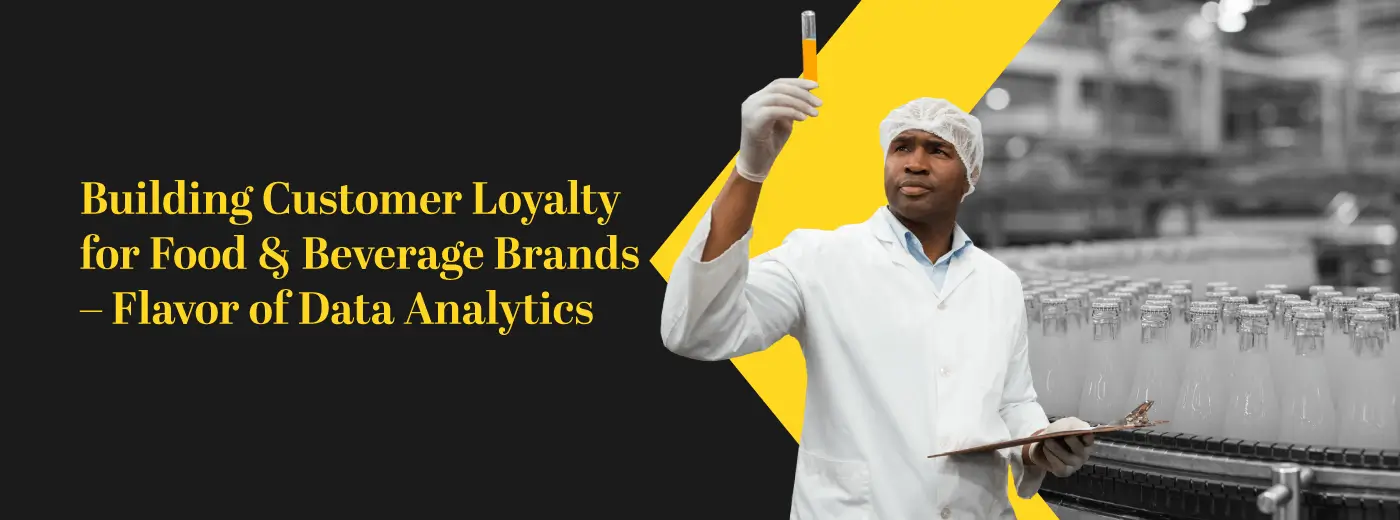
Sign up to receive latest insights & updates in technology, AI & data analytics, data science, & innovations from Polestar Analytics.
Editor’s Note: Hungry for F&B insights? Serving right up! We’ll talk about how businesses can leverage customer loyalty data analytics to gain consumer insights for f&b for a better understanding of preferences, behaviors, and needs, ultimately optimizing operations to build lasting customer loyalty programs for the final consumer. From customization to market basket analysis and data science-driven culinary innovations, this article provides actionable strategies to captivate hearts and taste buds.
Is data analytics in food industry the key to sustained customer loyalty?
Imagine having the power to understand your customers on a deep, intimate level—something that nudges them to keep coming back for more.
Data Analytics in food industry has proved to be a potent tool in tackling business challenges and their outcomes, specially where building customer loyalty means holding all the cards. According to market research, the global food and beverage industry is projected to reach $9.2 trillion by 2027, with a compound annual growth rate (CAGR) of 6.3%.
Now with this in mind, let’s dive deeper to uncover how data analytics is transforming customer loyalty analytics and strategies for food and beverage brands.
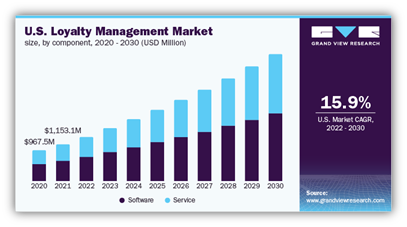
Collecting and Analyzing Customer Data Platforms

Moreover, In a survey of more than 200 IT executives in the food and beverage industry conducted by demand science in collaboration with Comcast Business, Nearly a third of respondents said they intend to improve the use of business analytics for decision-making.
These statistics show that Data collection is both necessary and desirable to improve customer experience – starting with everything from featured menu offerings to providing highly personalized promotions and rewards programs. Effective use of analytics can also help companies optimize their supply chains and reduce costs.

Gain valuable insights into customer preferences, behavior, and feedback, which can guide your strategic planning.
Personalization and Customization
In a world where customization reigns supreme, personalization becomes the cornerstone of customer loyalty programs. hanks to customer loyalty data analytics, it equips brands with the ability to deliver tailored experiences that make customers feel truly special:

1. From Recommendations to Delight:Through customer loyalty data analytics, brands can create personalized experiences that resonate with customers. Brands can provide recommendations that align perfectly with customers' preferences. This allows for a level of personalization that creates a sense of connection which cultivates loyalty. Take Starbucks for example.
Starbucks' "My Starbucks Rewards" program, driven by data analytics not only includes preferences, and past orders but also dietary restrictions and seasonal choices. It has seen an increase in revenue, with members spending three times more than non-members.
2. The Art of Menu Customization: Taking it a step further, advanced customer analytics targeting valuing segmenting and loyalty techniques can help brands customize their menu options brands can offer customization options that allow customers to curate their orders based on individual tastes, dietary needs, or ingredient preferences. Take Subway for example. The level of customization which they provide through their “Make you own sandwich” process as well as adding regional taste to the menus helps them add up to their USP. This level of customization enhances the customer experience and fosters a sense of loyalty and connection.
There is no question that feedback and reviews from customers can take brands to higher levels of success. By utilizing data analytics, brands can transform this feedback into useful insights and use these insights in ongoing improvement and boosting customer loyalty.
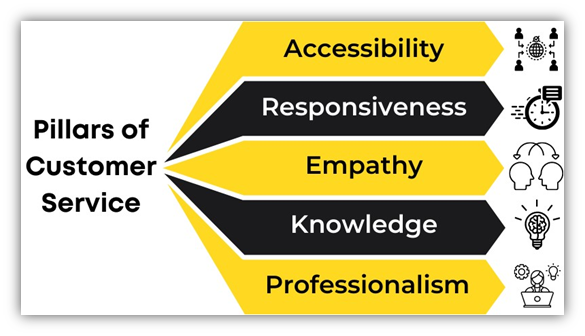
Turning Critiques into Gold Customer feedback and reviews are valuable sources of information that can propel brands to new heights of excellence. Data analytics empowers brands to analyze feedback, unearth insights, and drive continuous improvement, ultimately cultivating customer loyalty.
Mining Customer Sentiments: Through sentiment analysis, brands can dig deep into customer feedback, including reviews, surveys, and social media sentiments. By deciphering the positive and negative sentiments, brands gain invaluable insights into customer perceptions and their Net Promoter Score (NPS) - identifying whether the customer is a Promoter or a Detractor of a brand.
Addressing Concerns and Delighting Taste Buds: Through setting up comprehensive customer data platforms, brands can acquire valuable insights into changing customer preferences. Utilizing this information, they can make prompt changes to product quality, flavour, and overall customer experience, showcasing their constant dedication to customer happiness.
Leveraging these insights, they are able to promptly modify product quality, flavor, and overall satisfaction in order to show their consistent dedication to meeting customer needs. By achieving this, brands have the potential to capture customers' affections and appetites, strengthening loyalty and support.
Market Basket analysis (MBA) is an analytical technique used to uncover relationships and patterns in consumer purchasing behavior by identifying which products are frequently purchased together, allowing a better understanding of associations between items. By analysing transaction data, F&B brands can identify product associations, helping them understand customer preferences and optimize product placement and bundling.
Identifying Cross-Selling Opportunities:
Data analytics in food industry can uncover hidden patterns in customer purchase behavior, allowing brands to suggest complementary items that customers may be interested in. For example, recommending fries with burgers or pairing wine with a steak can enhance the overall dining experience and encourage repeat visits.
Tailoring Loyalty Rewards:
Market Basket Analysis can help F&B brands identify the most popular product combinations among loyal customers. Brands can then tailor their customer loyalty programs to incentivize customers to continue purchasing these combinations, reinforcing customer loyalty.
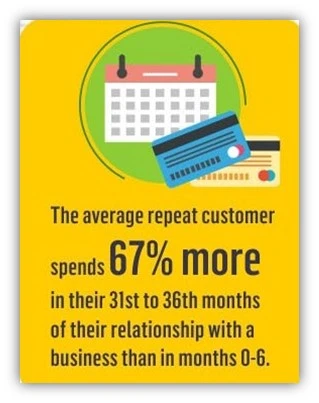
The average repeat customer spends 67% more in the 31st to 36th months of their relationship with a business than in months 0-6.
Keeping this in mind, brands can then tailor their customer loyalty programs to incentivize customers to continue purchasing these combinations, reinforcing customer loyalty.
Now that we have more clarity about how data analytics in food industry amalgamated with Market Basket Analysis can open new doors for customer loyalty. Let’s see how we can track/measure its effectiveness:
What is Lift?
Lift is a data analysis metric that measures the likelihood of two or more products being purchased together compared to their individual purchase probabilities. A lift value greater than 1 indicates a positive correlation, while a value less than 1 suggests a negative correlation.
What does it measure?
- Evaluating the Effectiveness of Promotions:
F&B brands can use lift analysis to assess the impact of promotions or discounts on customer purchase behavior. If certain promotions lead to increased sales of specific products, brands can incorporate these findings into future marketing campaigns to drive customer loyalty.
What is Confidence?
Confidence is a data analysis metric that measures the likelihood of one product being purchased given that another product has already been purchased. High confidence values indicate a strong association between products.
What does it measure?
- Customizing Loyalty Program Rewards:
Using confidence metrics, F&B brands can identify the most influential products in driving customer loyalty. Brands can then design loyalty program rewards that align with these popular products, enticing customers to earn rewards by purchasing their favorite items.
- Personalizing Marketing Communications:
By analyzing confidence metrics, brands can tailor marketing messages to individual customers based on their preferred products. Personalized communications that highlight relevant products and offers enhance customer engagement and foster loyalty.
The tools every Chief Digital Officer needs to build a world-class analytics organization.
RFM Analysis
Recency – Frequency – Monetary analysis is an effective method for segmenting customers based on their past purchasing patterns and understanding their behavior. With the help of this tactic, you may determine which of your clients are the most valuable, evaluate the success of your marketing initiatives, and increase client retention.Taste Profiling with Data Science:
Data science enables F&B brands to understand individual palates and preferences. By analyzing historical orders and customer data platforms, brands can identify patterns and tailor menu offerings to cater to diverse tastes, ensuring a delightful dining experience for every patron.
Sensorial Analysis for Quality Assurance:
Techniques such as sensorial analysis allow F&B brands to measure and assess the sensory attributes of their food and beverages. From flavor profiles and texture to aroma and visual appeal, these insights enable brands to maintain consistent quality and craft products that leave a lasting impression.
Innovations for Culinary Creations:
1. Recipe Recommendation Engines:
Data science-powered recommendation engines can suggest new recipes and menu items based on historical customer preferences and emerging food trends. By infusing creativity with data insights, F&B brands can continually surprise and delight customers with innovative culinary creations.
2. Precision in Portioning and Presentation:
Data science helps F&B brands optimize portion sizes, balancing customer satisfaction with cost-effectiveness. By analyzing consumption patterns and feedback, brands can ensure that portion sizes match customer expectations, minimizing food wastage, and enhancing perceived value.
3. Seamless Digital Ordering and Delivery Experience:
Data science streamlines delivery operations by predicting optimal delivery routes based on real-time traffic and customer locations. This precision ensures timely deliveries, enhancing customer satisfaction, and loyalty to the brand.
Explore key drivers and trends shaping the industry, and how should brands leverage technology and analytics to effectively capitalize on this trend.
We hope the above implementations of data analytics in F&B have inspired you to find ways to improve your own food and beverage brand’s retention strategy. To enhance customer retention in the food and beverage industry, consider implementing the strategies supported by advanced data analytics techniques.
Here's how each approach can help improve customer loyalty through a more technical lens:
1. Enhance your loyalty program’s effectiveness with reinforcement learning algorithms
Rewarding customers for their loyalty has been shown to boost repeat business. However, it is true that conventional loyalty schemes are no more sufficient to maintain customer interest. But by implementing a data-driven loyalty program, F&B brands can take this strategy to the next level. Here's how:
> Utilize customer segmentation techniques like K-Means clustering to categorize customers according to their buying patterns, personal information, and interests. This allows for the creation of personalized reward tiers and offers tailored to each segment's unique needs.
- Employ recommendation engines powered by collaborative filtering algorithms to suggest products and offers based on a customer's past purchases and the preferences of similar customers. This personalized approach increases the relevance and appeal of loyalty rewards.
- Analyze customer lifetime value (CLV) through predictive models to pinpoint valuable customers and provide them with exclusive rewards and experiences. By focusing on keeping these valuable customers, brands can maximize the return on investment of their loyalty program spending.
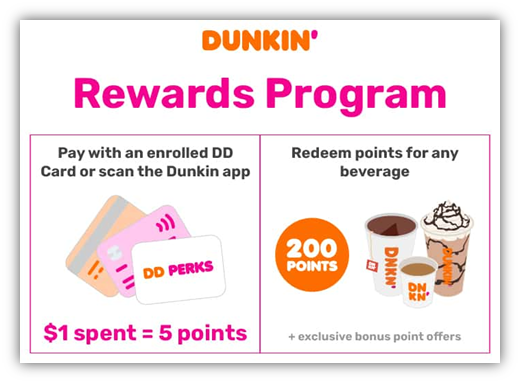
2. Percentage-based rewards
The second strategy in place is classic strategy used by Credit cards since the Stone Age – reward your customers with percentage-based rewards. The more they buy with that purchase, the more value they get from that reward. It should be one of the most widely used (but surprisingly isn’t) strategies to keep your buyer coming back. Percentage-based rewards have long been a staple in the credit card industry, and they can be equally effective in the food and beverage sector when optimized using reinforcement learning. Here's how:
Hence, using data analytics in food industry can assist you with potent insights for building customer loyalty. Through gathering and analyzing customer preference data, product and service quality standards, and boosting customer engagement and loyalty. This implies enhanced chances for the brands to develop tailor-made experiences that deeply connect with their customers and make a memorable impact. So, if you want to stand out in this crowded market, embracing data analytics is a smart move!
About Author

Sports and Tech Enthusiast
In a world of opinions and cold numbers, data tells a compelling story.